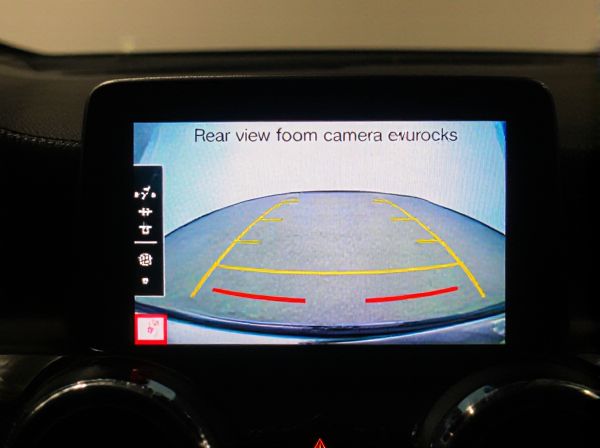
Photo illustration: Rear Camera Display vs Top View Camera Display
Rear camera displays provide a clear view of what is directly behind your vehicle, enhancing safety while reversing and parking. Top view camera displays, also known as bird's-eye view or 360-degree cameras, offer a comprehensive perspective by combining images from multiple cameras to create a full surroundings view, making maneuvering in tight spaces easier. Choosing between the two depends on your specific driving needs and the level of visibility you desire for safer navigation.
Table of Comparison
| Feature | Rear Camera Display | Top View Camera Display |
|---|---|---|
| View Angle | Wide-angle rear perspective | 360-degree bird's-eye perspective |
| Primary Use | Assists reversing and parking | Enhances all-around parking and maneuvering |
| Display Location | Dashboard screen | Dashboard screen |
| Image Clarity | High-resolution rear view | Composite stitched view from multiple cameras |
| Obstacle Detection | Alerts for rear obstacles | 360-degree obstacle alerts |
| Parking Assistance | Guides rear parking | Guides multi-angle parking |
| Complexity | Simple, single camera setup | Complex, multi-camera system |
| Cost | Lower cost | Higher cost |
Introduction to Automotive Camera Display Systems
Automotive camera display systems enhance driver awareness by providing real-time visuals from multiple angles. Rear camera displays offer a clear view behind the vehicle, crucial for safe reversing and parking maneuvers. Top view camera displays integrate inputs from several cameras to create a 360-degree bird's-eye perspective, improving spatial awareness and obstacle avoidance.
Understanding Rear Camera Display Technology
Rear Camera Display technology uses a high-resolution, wide-angle camera mounted at the back of a vehicle to provide real-time video feed, enhancing driver visibility during reverse maneuvers. This system often integrates with parking sensors and intelligent guidelines to improve spatial awareness and reduce blind spots. Compared to Top View Camera Display, which offers a bird's-eye perspective by stitching images from multiple cameras, Rear Camera Display focuses specifically on rearward visibility and obstacle detection.
Exploring Top View Camera Display Features
Top View Camera Displays provide comprehensive surround-view imaging that enhances vehicle safety by offering a 360-degree perspective, enabling drivers to detect obstacles and pedestrians more effectively. These systems utilize multiple wide-angle cameras mounted around the vehicle to stitch together a bird's-eye view, improving parking precision and maneuverability in tight spaces. Compared to Rear Camera Displays that show only the rear area, Top View Camera Displays offer broader situational awareness, reducing blind spots and increasing overall driving confidence.
Installation and Setup Differences
Rear camera displays typically require mounting the camera at the back of the vehicle, with wiring routed through the trunk or rear bumper area, making installation straightforward for standard vehicles. Top view camera displays, also known as surround-view or bird's-eye view systems, involve installing multiple cameras around the vehicle--front, rear, and sides--and integrating their feeds into a single composite image, which requires more complex wiring and calibration during setup. The setup process for top view cameras often demands professional alignment to ensure accurate stitching and optimal display, whereas rear camera systems usually involve plug-and-play connections with minimal adjustment.
Image Coverage and Visibility Range
Rear camera displays offer a focused field of view primarily covering the area directly behind the vehicle, providing high-resolution images crucial for reversing and obstacle detection. Top view camera displays, also known as bird's-eye or surround-view systems, generate a composite image from multiple cameras to deliver a 360-degree perspective, significantly expanding image coverage and enhancing visibility of blind spots. The broader visibility range of top view cameras improves spatial awareness in tight parking scenarios, while rear cameras excel in detailed rearward visualization.
Parking Assistance and Maneuvering
Rear Camera Display provides real-time visual feedback directly behind the vehicle, enhancing precision during parallel parking and reversing in tight spaces. Top View Camera Display offers a comprehensive 360-degree bird's-eye perspective that helps drivers detect obstacles on all sides, significantly improving maneuvering in crowded or confined areas. Combining both camera systems maximizes parking assistance accuracy and reduces blind spots, ensuring safer and more confident vehicle handling.
Safety Enhancements and Risk Reduction
Rear camera displays improve safety by providing a clear view of obstacles directly behind the vehicle, reducing the risk of collisions during reversing maneuvers. Top view camera displays offer a comprehensive, bird's-eye perspective, enhancing spatial awareness and minimizing blind spots to prevent accidents in tight spaces. Integrating both systems significantly enhances driver visibility and reduces risks associated with low-speed maneuvers and parking.
User Experience and Ease of Use
Rear camera displays offer a direct and intuitive view of what is immediately behind the vehicle, enhancing ease of use for parking and reversing maneuvers by providing real-time feedback on obstacles. Top view camera displays, often using a 360-degree perspective, deliver a comprehensive spatial awareness of the vehicle's surroundings, improving user experience through better navigation in tight spaces and increased safety. Both systems enhance situational awareness, but top view camera displays typically provide a more holistic and user-friendly interface for complex driving scenarios.
Cost Comparison and Maintenance
Rear camera displays typically offer a more affordable cost structure compared to top view camera displays due to simpler technology and fewer sensors involved. Maintenance expenses for rear camera systems tend to be lower because of easier access and fewer components prone to damage or misalignment. Top view camera displays require more frequent calibration and higher repair costs owing to their complex, multi-angle setup and integration with advanced software features.
Which Camera Display is Best for You?
Rear camera displays provide a clear view of what's directly behind the vehicle, ideal for parking and reversing with enhanced safety. Top view camera displays combine images from multiple cameras to create a 360-degree bird's-eye perspective, making them perfect for tight spaces and maneuvering complex environments. Choosing the best camera display depends on your driving needs: rear camera displays suit everyday reversing, while top view displays offer comprehensive situational awareness for advanced navigation.
 caratoz.com
caratoz.com